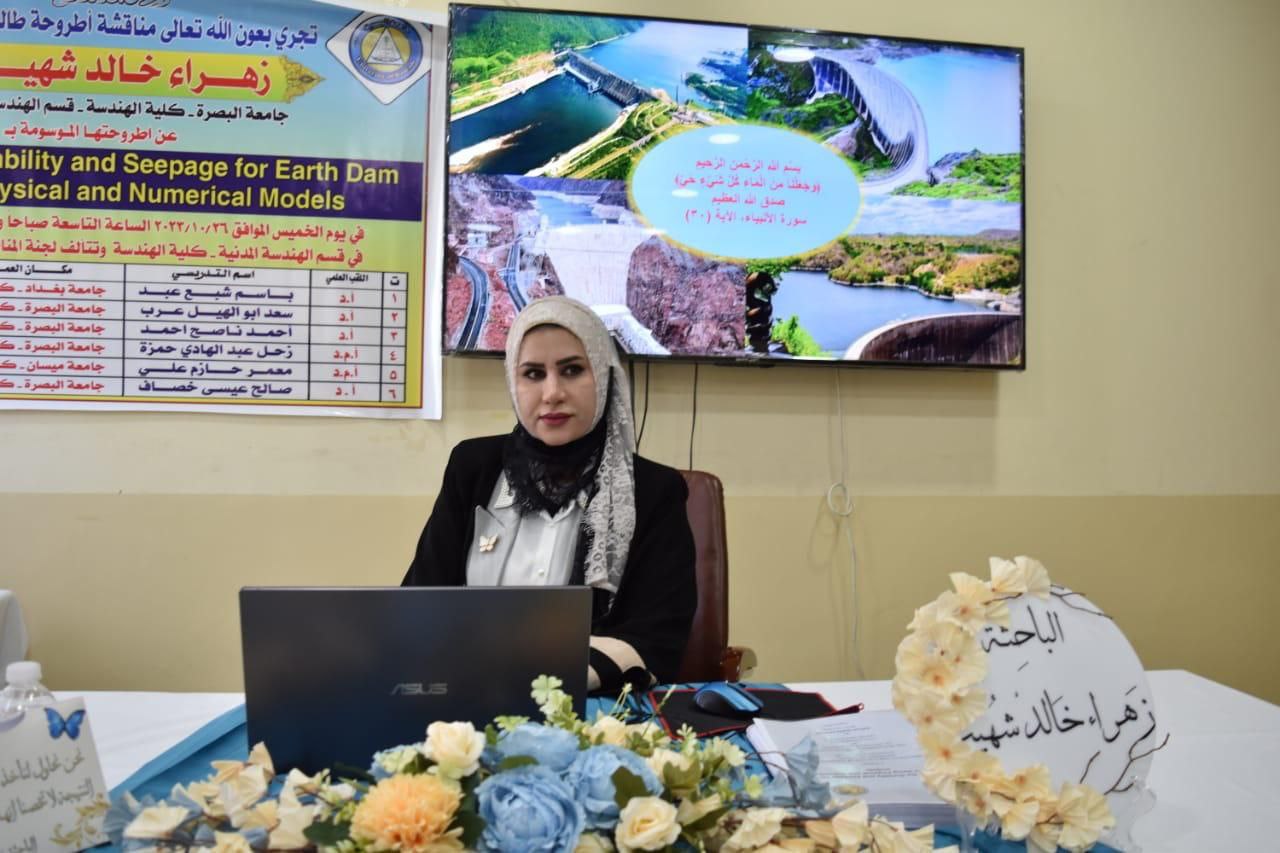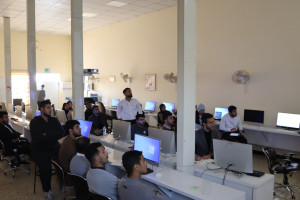A doctoral thesis in the Department of Civil Engineering at the College of Engineering discussed the study of the stability and seepage of earth dams using physical and numerical models. The thesis presented by researcher Zahraa Khaled Shahid included that failure to control water properly, water may be the cause of terrible disasters. Statistical studies show that water flooding was the main cause of the most deadly natural disasters. Besides, collapse and failure of dams may lead to floods. Hence, the relationship between safe dam management and effective flooding is an important aspect of every analysis The aim of this study is to verify the stability of seepage and slopes of several types of earthen dams using physical models, in addition to using the finite element program through the application of geotechnical engineering (SEEP/W and SLOPE/W). Eleven different physical embankment model configurations were tested (four homogeneous earthen embankment models with “maximum, average and minimum horizontal drainage”, six core-containing earthen embankment models and one anisotropic earthen embankment model) with three natural water levels (0.3, 0.45, 0.6). )m respectively, the experiments were conducted in two cases (steady-state and rapid withdrawal case)
Sustainable engineering has been used to enhance the soil properties of the first homogeneous filterless model using spent tire rubber powder (TRP) and effectiveness analysis to evaluate the ability of this material to be reused in earthen dams and see if it can effectively reduce seepage through earthen dams. The modeling process begins with the selection of configuration specifications. Then the evaluation is made based on the leakage line and stability Backside slopes and seepage rate within the dam body The results of this study for the first model (a homogeneous dam model without drainage constructed from sandy soil) showed that at the maximum water level, the leakage line cut the lower slope of the dam, leading to its failure, and the leakage rate was (10-5m3/sec × 2.08), while it is clear The leakage rate increased by 37.6% when a drain was used A good cover for the back of the dam, and the seepage line is always inside the body of the dam. The first model with the same dimensions and characteristics was tested again using a pulp of used car tire powder, then the effect of TRP on the perfusion rate was studied at different percentages. At concentrations of (15, 30, 50)% TRP was evaluated, the results showed that there was an improvement Significant reduction in the rate of leakage through the dam body. When adopting a ratio of 15%, the leakage decreased by 11.5%. While when using 30% TRP, the leakage decreased by 35.8%, and 50% TRP showed a good behavior to reduce the seepage line from the core region towards The backside of the dam and also reduces the leakage rate by 41.68%, resulting in remarkably good results. When using TRP pulp, the safety factor increased by 34.56%, while while using drainage, the safety factor increased by 34.29%.










